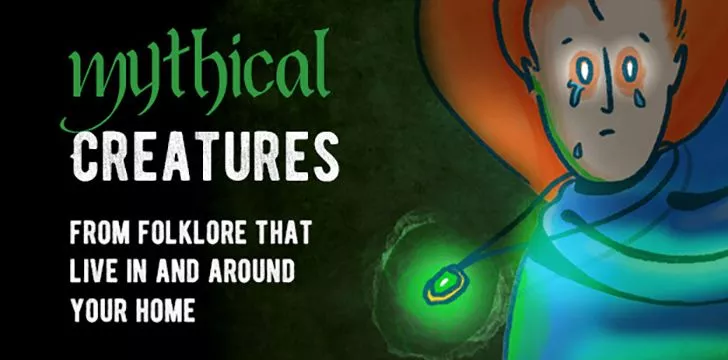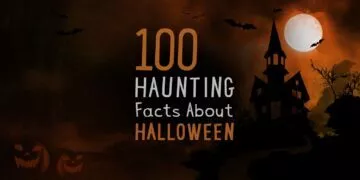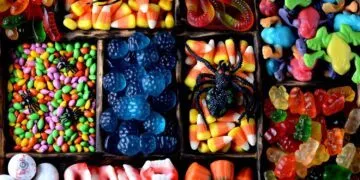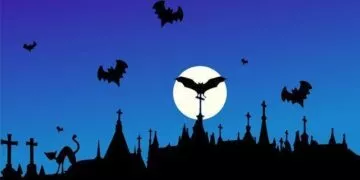Mythical creatures have been central to folklore traditions and storytelling around the world and throughout history.
The mighty Minotaur, the fabled cyclops, centaurs, trolls, goblins, and elves, all these examples spring to mind.
But what about household spirits?
From helpful hands around the house to some less-than-friendly characters, Climadoor brought some of these loric household spirits and mythical creatures to life in these fascinating illustrations.
Read on to find out more!
Brownie
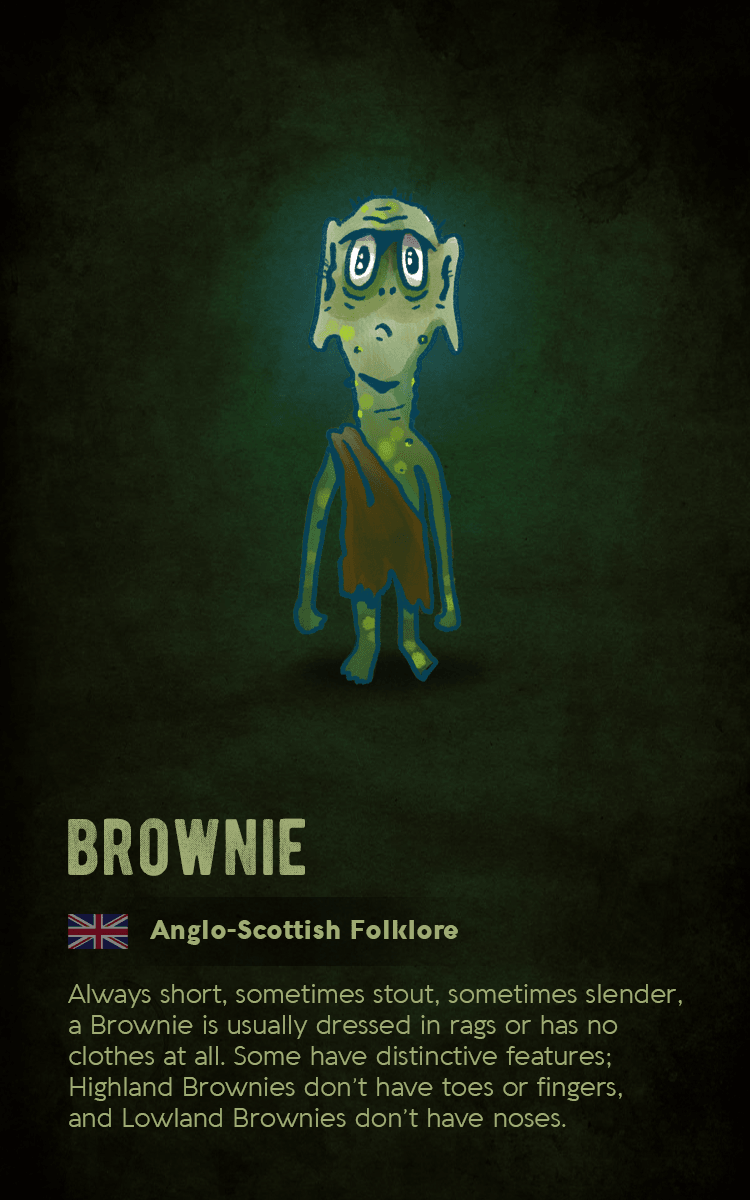
The alleged inspiration for the beloved Harry Potter character Dobby the House Elf, Brownies are small in stature with mottled, brown skin and hail from the Anglo-Scottish folklore tradition.
Brownies come out whilst the owners of the house are sleeping to help with the household duties and chores.
Keep them on side with small offerings like a bowl of porridge on the hearth.
Brownies are easily offended and will stop offering their services if you insult them, baptize them, or give them clothes.
In some cases, they can turn into a different creature if suitably offended – a boggart, to be exact.
Domovoy
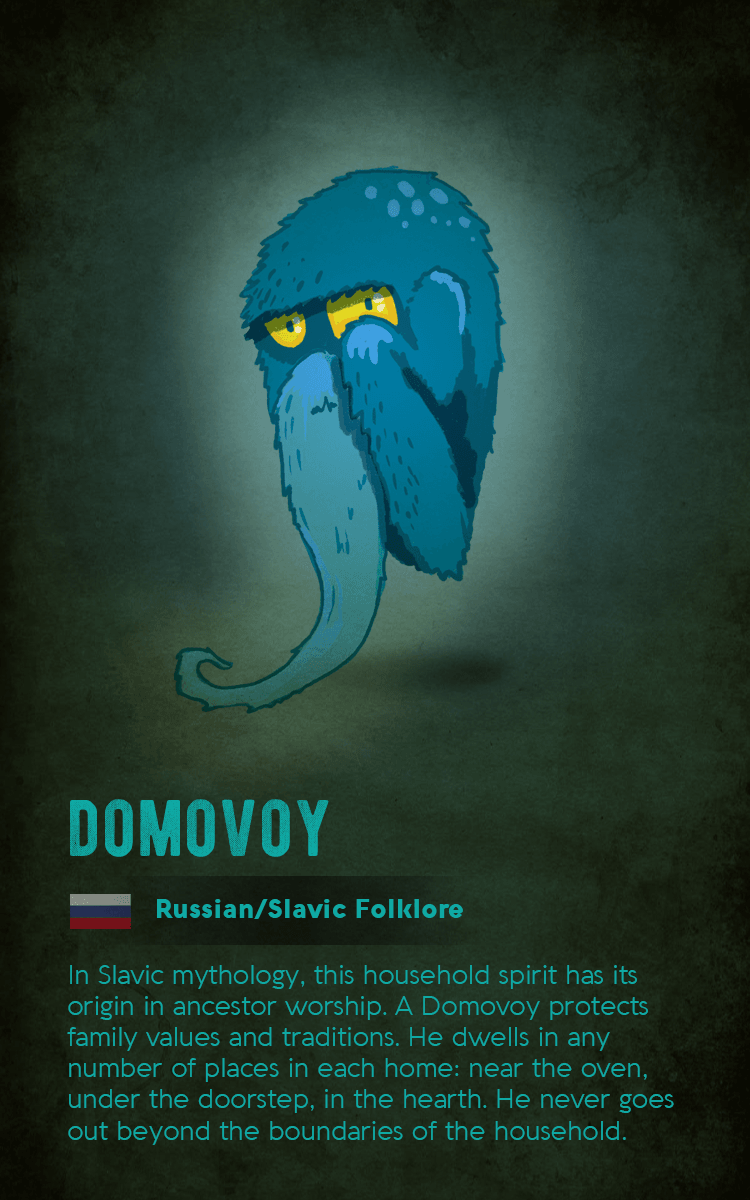
From the Slavic Native Faith or Rodnovery, the domovoy is a household spirit that will come to stay in the houses of the dedicated and hard-working.
Rodnovery is a relatively young religion established to help create a sense of identity for Slavic people and nations that were seeking to preserve their own unique culture and heritage.
Domovoy are masculine creatures that live in various places around the house, like behind the oven or in the fireplace, and they help with the household chores and tending to the animals.
You’ll hear them making noises in the night, and you have to make some small offerings of food to keep them happy.
Domovoy rewards hard-working virtuous people with some help around the house, if you start to not meet these behavioral requirements, domovoy will leave you to fend for yourself.
Baku
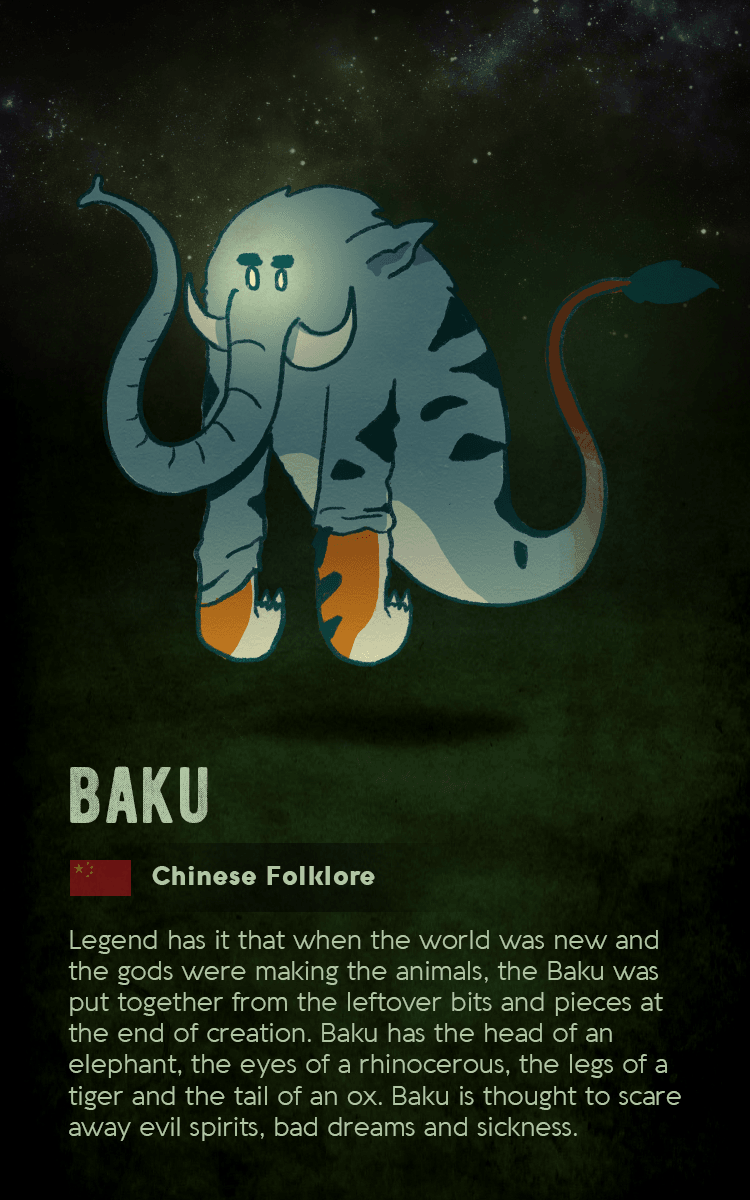
The idea of protecting our dreams is not an old one. The mystery of dreams is one that continues to this day.
What do they mean? And why do we dream?
The idea of nightmares and trying to prevent them spans back thousands of years.
You may be familiar with Native American dream catchers, but did you know of the dream-eating Baku from Japanese folklore?
The Baku is a chimera with the head of an elephant, rhinoceros eyes, tiger legs, the tail of an ox, and the body of a bear.
The Baku will eat your nightmares and can be summoned in the night.
Japanese children may summon the Baku by saying ‘Baku-san, come and eat my dream’ three times.
This can be a double-edged sword, however.
Your nightmare may not satisfy the Baku’s hunger, and it may decide to eat the rest of your dreams, leaving you with no hopes or aspirations.
Matagot
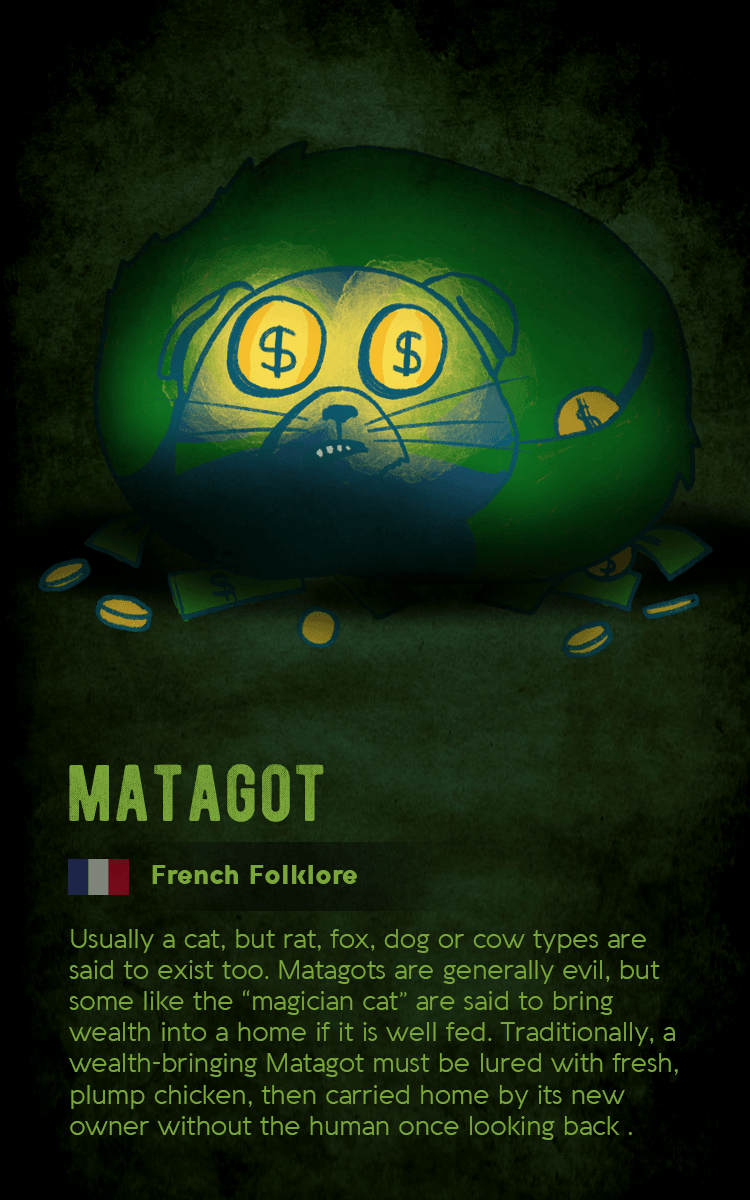
Black cats have been associated with superstitions around the world.
In some areas of Europe, a black cat is an auspicious sign; in other parts of the world, they are a bad omen and, in some cases, are an omen of death.
In French folklore, there is a creature known as the matagot.
Most often in the form of a black cat, but known to be found in the form of a cat, dog, fox, rat, or cow, matagots are sought after.
If you are successful in ensnaring a matagot and bringing it into your home, you have to offer it the first bite and drink of every meal you have, and the matagot will present you with a gold coin every day, bringing prosperity and wealth to your home.
Banshee
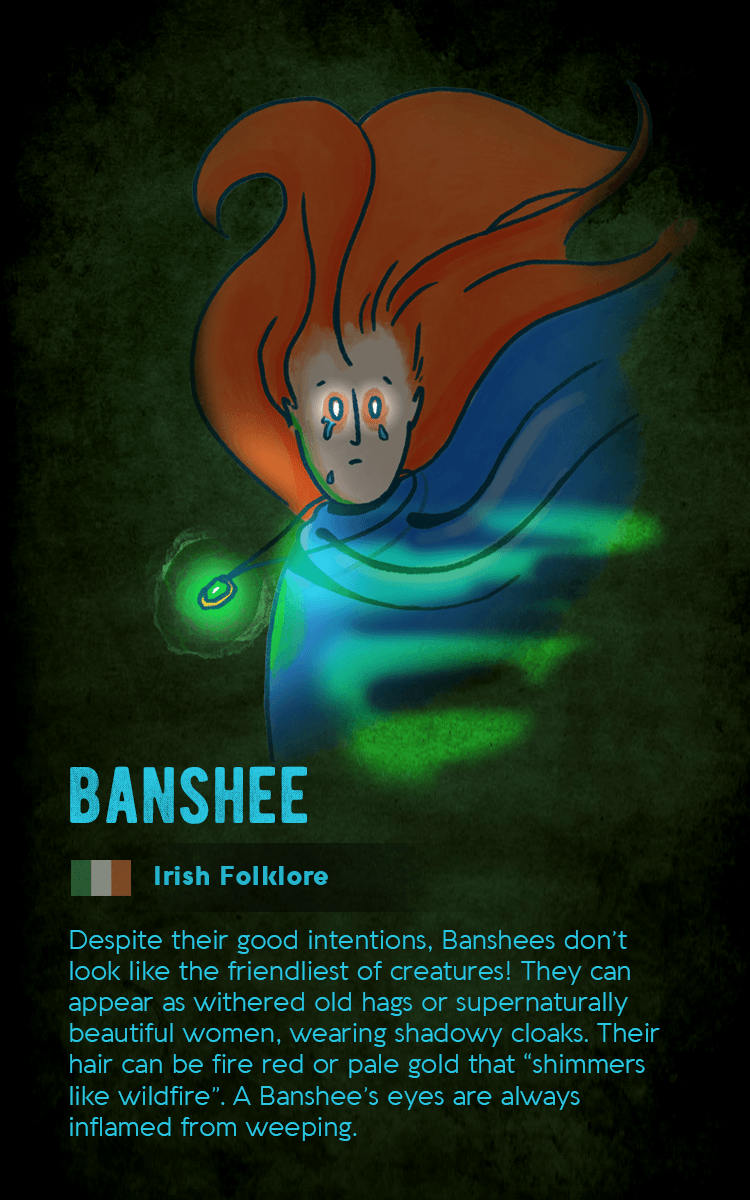
The Banshee is a famous cultural export of Ireland.
Borne out of the ancient tradition of “keening,” banshees are haunting spirits known for their blood-curdling shrieks, wails, and screams.
Keening was a tradition associated with mourning.
In some cases, women were hired for their keening skills and would be paid to sit outside the front of the house and cry a lament for someone who has recently passed or is about to die.
This tradition died out, but the crying laments could still be heard decades and centuries later.
Banshees are said to be the ghosts of mothers who died during childbirth; they can appear as old, bedraggled hags or as young, virginal women with red hair.
The scream of a banshee would herald the death of a family member, with accounts saying just before a loved one died, they would hear an almighty shriek and wail.
Nisse
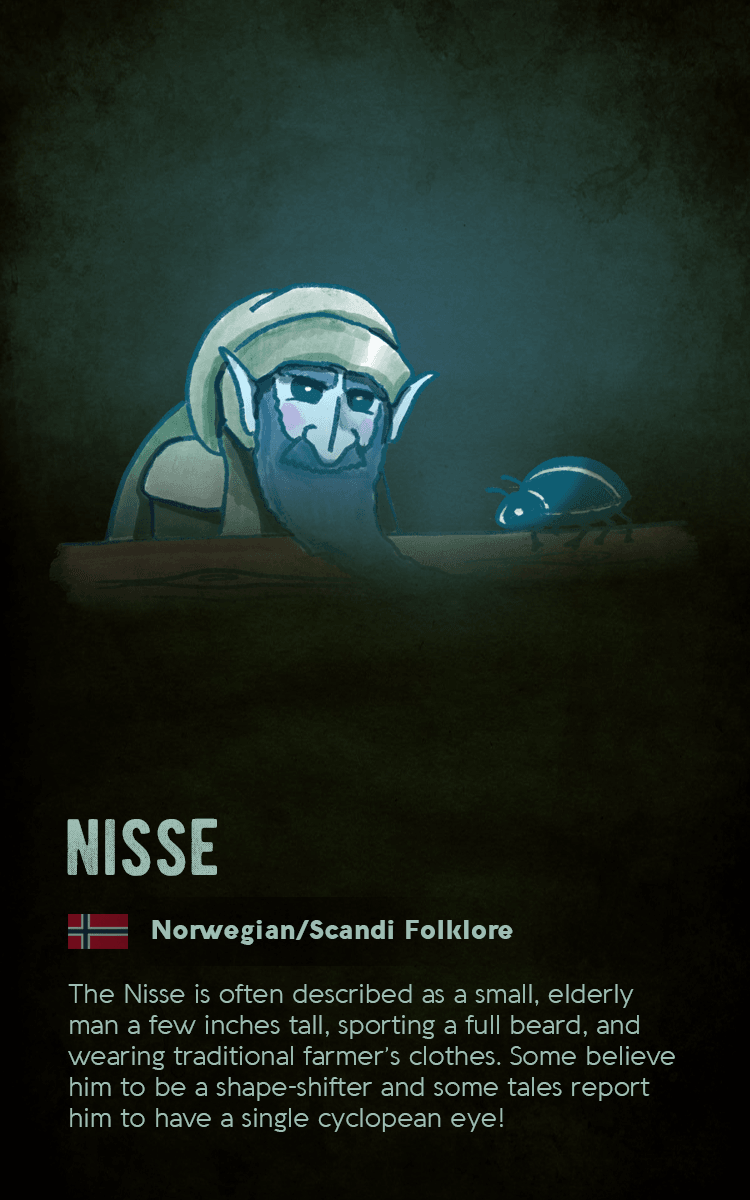
From Norweigan folklore, Nisse are more commonly known as Christmas elves outside of Norway.
Looking very much like how we would depict garden gnomes, Nisse have been a feature of Norweigan lore for a long time.
Another household creature that helps out with the household chores and tending to the animals, you’d be very happy to have them helping out around the house.
In return for their services, all they ask is your trust and respect, and a bowl of porridge with butter on Christmas Eve – hence the association with Christmas.
As Scandanavian Europe began to embrace Christianity, belief and celebration of nisse began to drop as it could have been interpreted as worshiping false idols.
Zashiki Warashi
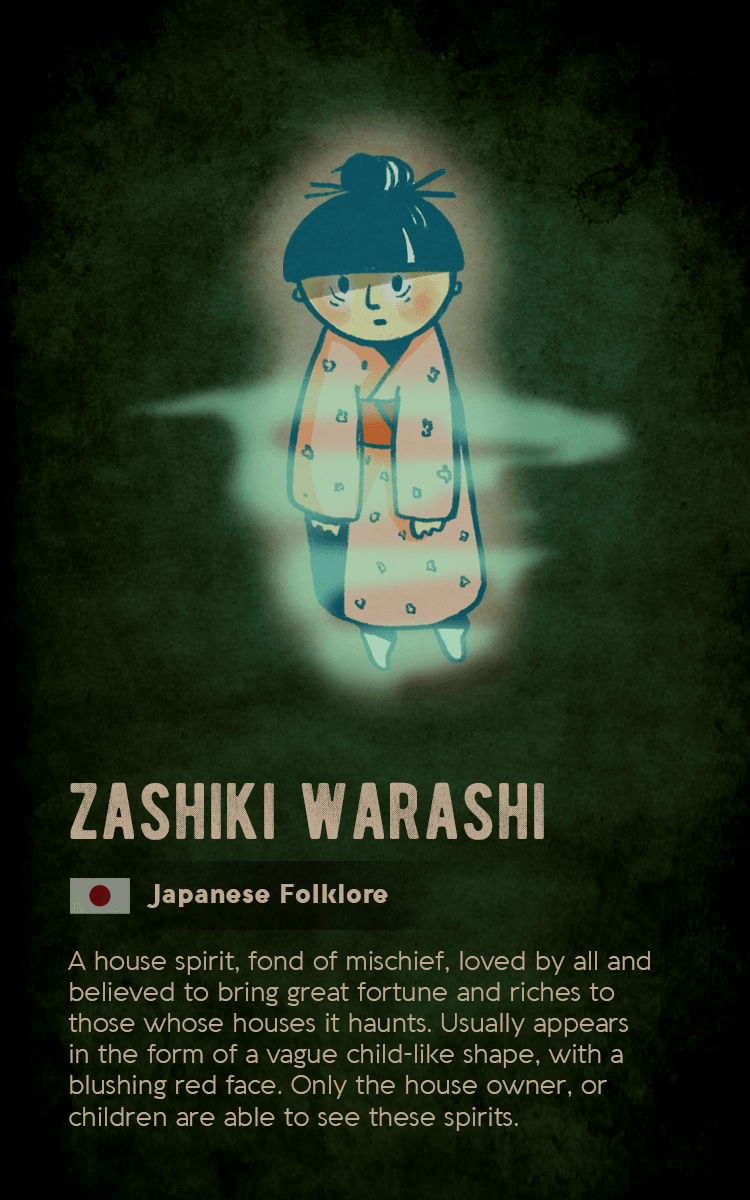
A friendly house spirit that is loved by anyone that is lucky enough to come into contact with them, Zashiki Warashi are best described as ghost children but this isn’t as scary as it sounds.
Dressed in traditional Japanese clothing and robes, Zashiki Warashi are like an extension of your family.
Playing games and singing songs, they are said to bring good fortune and prosperity to whatever house they’re in.
In return for their good fortunes, you would be expected to offer them some gifts and sweet treats every now and then.
It’s not all fun and games with them, sometimes they will play some mischievous pranks as kids will be kids, after all!
If Zashiki Warashi decide to leave your home, then it is said that your household will fall into a steep decline.
Boggart
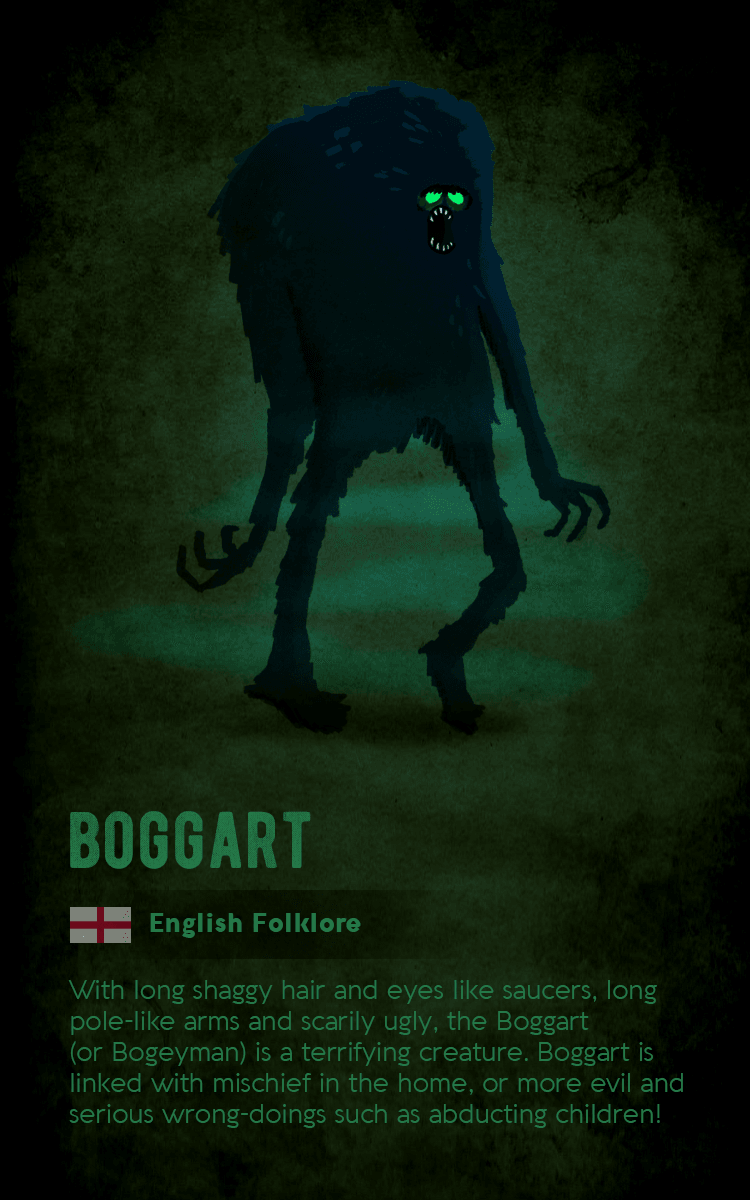
Not the shape shifting ghouls from Harry Potter, boggarts actually have a fixed appearance in British folklore.
Also known as the Bogeyman, boggarts are mythical creatures that were known to cause mischief around the house.
From stealing food and spoiling milk, boggarts have been charged with more serious offences, like abducting children.
Said to have thick, shaggy hair, a hideous appearance, and deep saucer-like eyes, boggarts were really just employed as a tactic to get children to behave.
The Bogeyman has still been doing that job today and there are plenty of other scary tales parents will tell their children for a bit of peace and quiet!
One of the interesting things about looking at mythical household creatures from different cultures, are the running themes you can spot.
Brownies aren’t too dissimilar to the Domovoy or Nisse, for example.
It just goes to show that despite our unique cultural differences, there’s common ground to be shared, enjoyed and celebrated across borders and languages!

